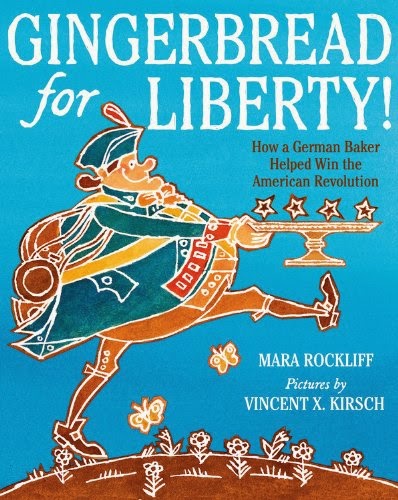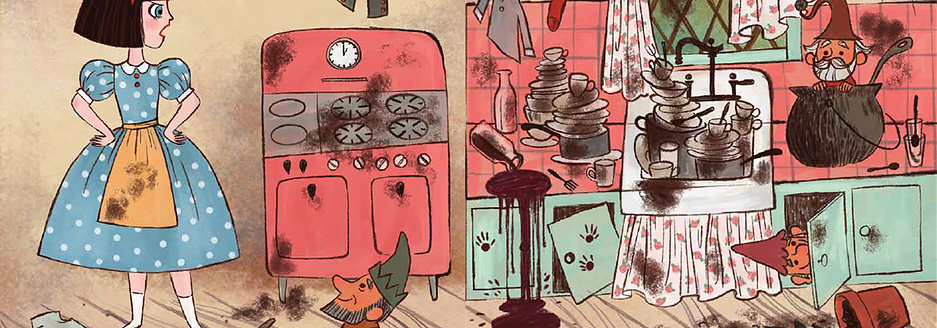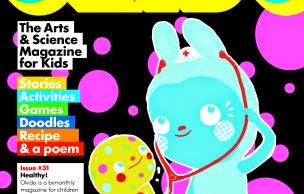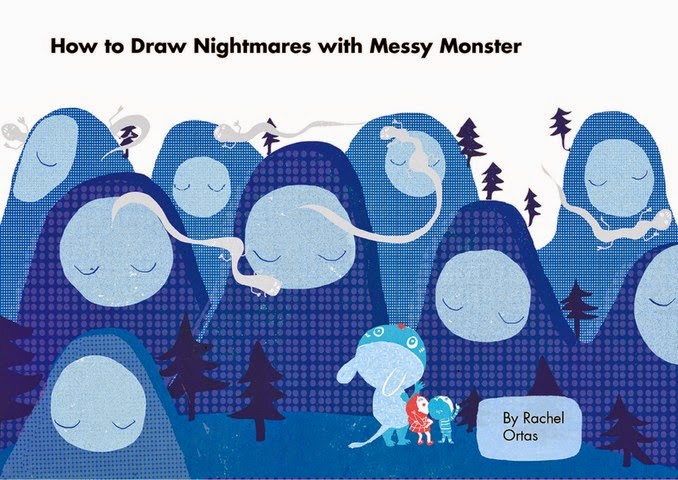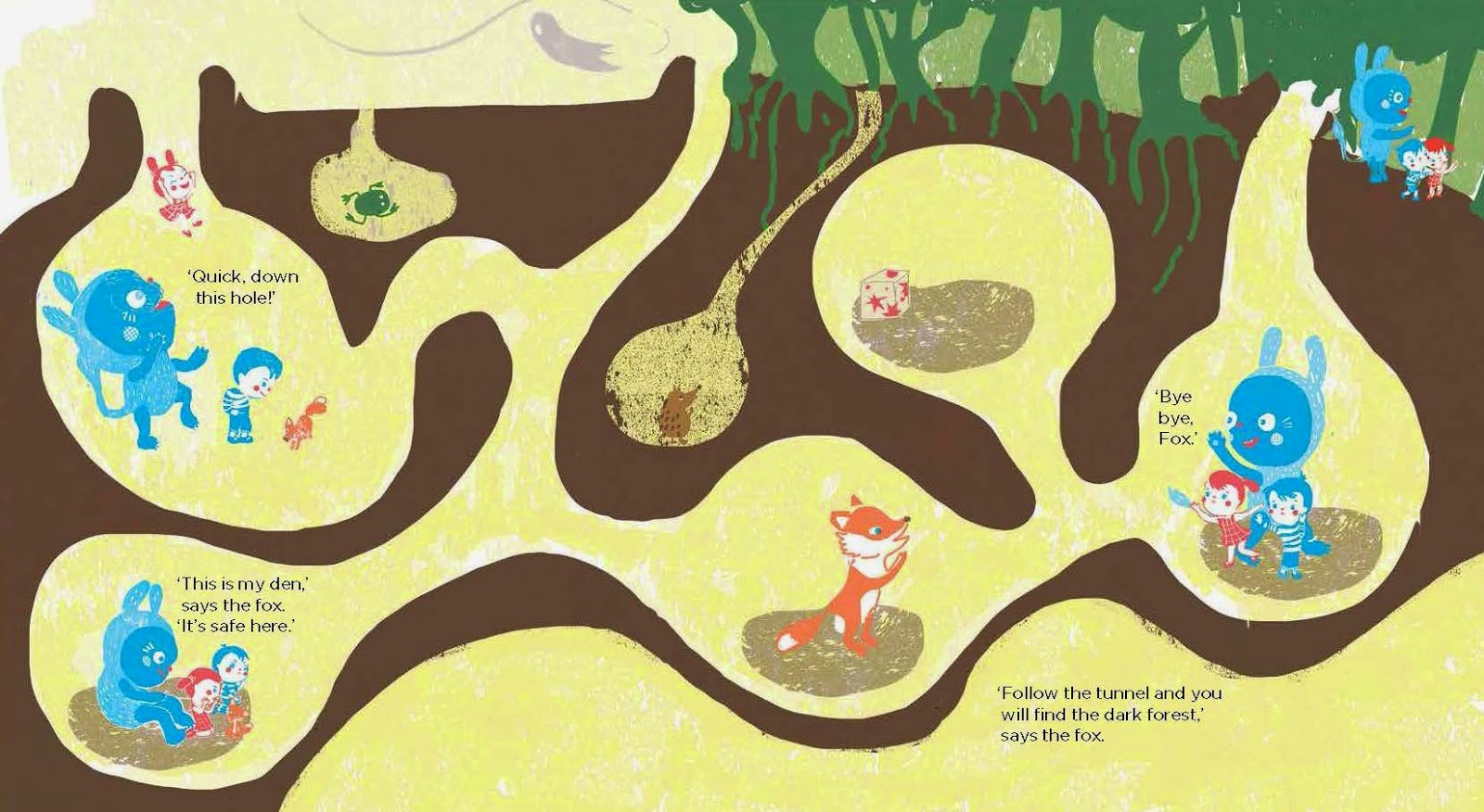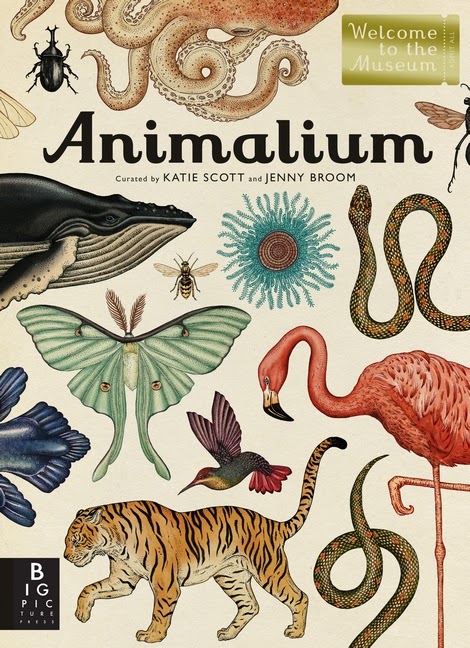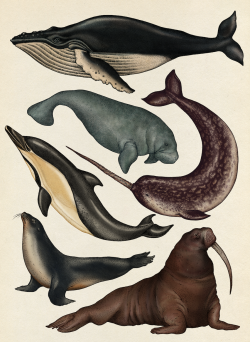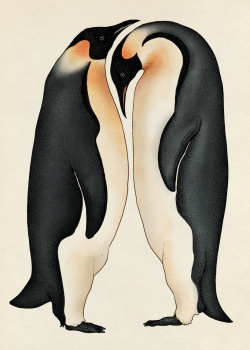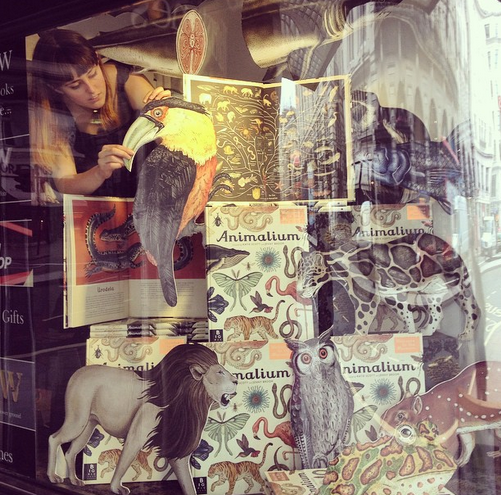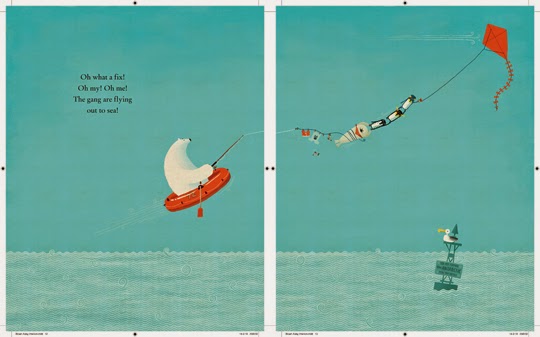**This book really got my wheels spinning and I found that I had a lot to say about it before even getting to the plot. Skip to the third paragraph if that is what you came for...**
Despite my love of girl detectives and historical England, I have to admit that I felt a bit more skeptical than excited when The Wollstonecraft Detective Agency: The Case of the Missing Moonstone arrived at my door, even if it is perfectly illustrated by a favorite of mine, Kelly Murphy. For the most part, my skepticism came from a college infatuation with Percy Bysshe Shelley, Mary Wollstonecraft Godwin Shelley and George Gordon Byron that peaked with the viewing of a Ken Russell movie titled Gothic. In the movie, which takes place at Byron's villa in Switzerland, Mary, Shelley, Byron, Mary's half-sister Claire Clairemont and Dr. Polidori spend a stormy evening indoors telling ghost stories. From these stories, Mary was inspired to write Frankenstein, the first work science fiction, and Polidori The Vampyre. Based on true events, Russell's movie is no Masterpiece Theater period piece, leaning more toward horror. I realize that the movie is fictionalized, but Shelley and Byron and even Mary Shelley seem a bit too notorious, scandalous and all-around adult to be turned into characters in a middle grade novel, thus my skepticism. However, author Jordan Stratford takes even more liberties with history than Russell, changing the ages and even dates of death for characters (as well as throwing in a young Charles Dickens for good measure, who was actually fourteen in 1826 when the story begins) in The Wollstonecraft Detective Agency: The Case of the Missing Moonstone so that he can get certain people in the room together. While this makes me want to grind my teeth a little, I decided to loosen my rigid ideas about historical fiction and alternative historical fiction and approach Stratford's (very, very creative, I have to admit) liberty taking as I would an episode of Dr. Who: time will bend, facts are flexible and, most of all, don't over think it.

And I won't over think it, especially since Stratford begins The Wollstonecraft Detective Agency: The Case of the Missing Moonstone with an appropriately brief (kid's just might actually read this, and if they don't, make them) preface that explains precisely WHY he wanted to toy with time. Stratford writes, "This is a made-up story about two very real girls: Ada Byron, who has been called the world's first computer programmer, and Mary Shelley, the world's first science-fiction author." While the real Ada Byron and Mary Shelley were eighteen years apart in age, Stratford makes them eleven and fourteen, respectively, for his story. Most happily, there are notes at the end of the novel (which I read BEFORE starting the book to better understand why Stratford made the choices he did) that "reveal more about what happened to each of them in real life" and are written in a way that is especially comprehensible for young readers. Stratford sets the stage by noting the amazing inventions that were changing the world at a fast pace, from the electric battery to the electric arc light to the steam engine. Next, he explains that, in 1826 when the story begins, the lives of women, especially girls, were "extremely limited and under constant watch." Yet, upper-class girls, who were not expected to have a career or compete with men, were "free to read or study as they wished, for few took them seriously. Because of this rare freedom, the nineteenth century saw a sharp surge in the intellectual contributions of female scientists and mathematicians." In this crucible of scientific exploration and creative expansion and strict social codes, it is no wonder that upper class girls and women found the unexpected room to apply their overlooked intellects.
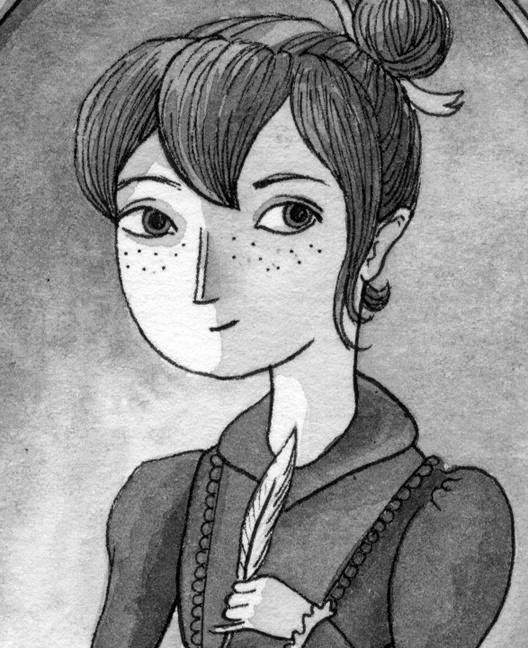 With this in mind, The Wollstonecraft Detective Agency: The Case of the Missing Moonstone does an admirable job of capturing and presenting these aspects in a way that will appeal to young readers and possibly even inspire them to look further into these historical figures and this period of history. Stratford gets everyone into the same room, and adults largely out of the picture, which is essential in a story of this nature, in this way: Now eleven, Ada Byron, daughter of Anne Isabella Byron (the 11th Baroness Wentworth and Baroness Byron) and Lord Byron, has reached the age at which a tutor rather than a governess is called for. The baroness refers to Lord Byron as, "mad, bad and dangerous to know," and finds Ada to be too much like him, thus choosing to spend as much time away from her as possible while also keeping any friends and relations of Byron away form her as well. Because of this, a young Percy Bysshe Shelley, who promised the dying Lord Byron he would look after Ada, arrives at Byron House as Ada's tutor, but going by the name Percy B. Snagsby and renamed Peebs (P.B.S.) by Ada. Mary Godwin arrives at Byron House to be tutored alongside Ada as the preferable option over going to school, which her cousins have assured her is horrid. That's the most explanation I could find in the book for getting Mary and Ada together, although it is a historical fact that Shelley, who came from wealth, was a benefactor of the often penniless William Godwin.
With this in mind, The Wollstonecraft Detective Agency: The Case of the Missing Moonstone does an admirable job of capturing and presenting these aspects in a way that will appeal to young readers and possibly even inspire them to look further into these historical figures and this period of history. Stratford gets everyone into the same room, and adults largely out of the picture, which is essential in a story of this nature, in this way: Now eleven, Ada Byron, daughter of Anne Isabella Byron (the 11th Baroness Wentworth and Baroness Byron) and Lord Byron, has reached the age at which a tutor rather than a governess is called for. The baroness refers to Lord Byron as, "mad, bad and dangerous to know," and finds Ada to be too much like him, thus choosing to spend as much time away from her as possible while also keeping any friends and relations of Byron away form her as well. Because of this, a young Percy Bysshe Shelley, who promised the dying Lord Byron he would look after Ada, arrives at Byron House as Ada's tutor, but going by the name Percy B. Snagsby and renamed Peebs (P.B.S.) by Ada. Mary Godwin arrives at Byron House to be tutored alongside Ada as the preferable option over going to school, which her cousins have assured her is horrid. That's the most explanation I could find in the book for getting Mary and Ada together, although it is a historical fact that Shelley, who came from wealth, was a benefactor of the often penniless William Godwin.
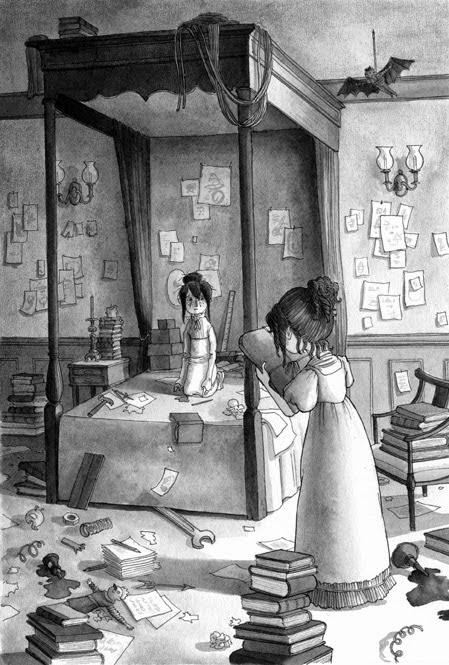 Once met, Mary and Ada are, for the most part, Watson and Holmes (the Gatiss and Moffatt BBC version) with Mary providing wisdom, empathy and human connection and Ada, who is short on social skills, bringing the scientific brains. In fact, when they first meet, Ada, wearing her favorite, filthy cherry red velvet dress, is collecting horse droppings to gather the potassium nitrate from is and create a cannon that will launch socks after a sojourn in the hot air balloon she constructed and keeps aloft by funneling hot air from the houses many chimneys into it. Stratford does a fine job detailing the character of Ada, who is seen having a tearful fit after her beloved dress is washed and no longer smells the same. When Ada, a compulsive reader, discovers a newspaper that Peebs has brought along, a whole new world is opened up to her. She is amazed that there are criminals who aren't clever and are being caught and sent to prison, then written about in the paper. Ada reasons that, if "clever criminals can make choices to become criminal and remain clever enough not to go to prison" then she should be able to decide to be the constabulary and catch them? After all, Mary told her that her mother, Mary Wollstonecraft, wrote that girls should be able to do anything boys can do. From this, the girls work out a way to have a detective agency in which their identities remain as secret as possible. With the help of Charles Dickens, they advertise in the Times and soon have many letters with cases to choose from. The case they settle on is one of a stollen moonstone, and in his notes Stratford acknowledges this nod to Wilkie Collins and his mystery, written in 1868, The Moonstone. Mesmerism, a stolen national treasure, an interrogation in the guise of an anachronistic "school project," a trip to Newgate Prison and a chase that takes place on an omnibus, hot air balloon and boat make up the mystery and the action that follows. The novel ends with the surprise, simultaneous announcements that Ada and Mary will soon be joined by their step and half sisters, Allegra and Jane. And, while I think that the addition of these girls to the story will open up many exciting new plot aspects, I can't help put aside what I know about the real Allegra and Claire Clairemont (the name Jane, who herself gave birth to a child by Byron, was later known by.)
Once met, Mary and Ada are, for the most part, Watson and Holmes (the Gatiss and Moffatt BBC version) with Mary providing wisdom, empathy and human connection and Ada, who is short on social skills, bringing the scientific brains. In fact, when they first meet, Ada, wearing her favorite, filthy cherry red velvet dress, is collecting horse droppings to gather the potassium nitrate from is and create a cannon that will launch socks after a sojourn in the hot air balloon she constructed and keeps aloft by funneling hot air from the houses many chimneys into it. Stratford does a fine job detailing the character of Ada, who is seen having a tearful fit after her beloved dress is washed and no longer smells the same. When Ada, a compulsive reader, discovers a newspaper that Peebs has brought along, a whole new world is opened up to her. She is amazed that there are criminals who aren't clever and are being caught and sent to prison, then written about in the paper. Ada reasons that, if "clever criminals can make choices to become criminal and remain clever enough not to go to prison" then she should be able to decide to be the constabulary and catch them? After all, Mary told her that her mother, Mary Wollstonecraft, wrote that girls should be able to do anything boys can do. From this, the girls work out a way to have a detective agency in which their identities remain as secret as possible. With the help of Charles Dickens, they advertise in the Times and soon have many letters with cases to choose from. The case they settle on is one of a stollen moonstone, and in his notes Stratford acknowledges this nod to Wilkie Collins and his mystery, written in 1868, The Moonstone. Mesmerism, a stolen national treasure, an interrogation in the guise of an anachronistic "school project," a trip to Newgate Prison and a chase that takes place on an omnibus, hot air balloon and boat make up the mystery and the action that follows. The novel ends with the surprise, simultaneous announcements that Ada and Mary will soon be joined by their step and half sisters, Allegra and Jane. And, while I think that the addition of these girls to the story will open up many exciting new plot aspects, I can't help put aside what I know about the real Allegra and Claire Clairemont (the name Jane, who herself gave birth to a child by Byron, was later known by.)

Beyond the fictionalization of historical figures, there are places where the plot wears thin - it is extremely difficult to write a solid middle grade mystery, after all. However, I was able to overlook all of this - although I have to admit I could not stop over thinking and spent hours reading about the lives of Mary Shelley, Percy, Byron, Allegra, Claire Clairemont and Ada Lovelace - because Stratford is a wonderful writer. So many passages in my book are marked with moments of lovely writing, especially when the narrator is detailing an emotional experience being had by Ada or Mary, more than I can share, but here are a few:
Ada had loved number games and puzzles. She fixed things that were broken, and then began fixing things that weren't broken or broke things so they could be fixed in ways no one else understood or found particularly convenient. But the one puzzle she couldn't solve was people. To Ada, they all seemed to be broken in ways she couldn't make sense of, and couldn't fix.
Ada felt as though her entire body had been scooped out and filled with tigers, pacing in cages made of her hands and ribs and head.
"But this is science," asserted Ada. "Wondering, guessing, trying, looking at things, sorting variables, guessing again. That's how we did it. Science."
Ada thought it must be a useful kind of cleverness to notice how people notice things. She could tell Mary was clever in this particular way, and made a note to herself to notice mary noticing other people notice things.
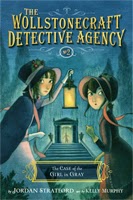 For Stratford, inspiring girls and sparking their interest in science is the main goal for the historical mash-up he has created in The Wollstonecraft Detective Agency: The Case of the Missing Moonstone, and when you think about it, pairing the world's first computer programmer with the world's first science fiction author (Stratford claims that Ada and Mary gave us the iPad and Star Wars) solving the literary world's first mystery is pretty cool. The best part is that young readers will be able to read and enjoy this first in a new series - The Case of the Girl in Grey comes out in August of this year - without the burden and hang-ups that come with prior knowledge of the characters. For me, despite how much I enjoyed The Wollstonecraft Detective Agency: The Case of the Missing Moonstone, I can't help wonder if the story and characters might have been better served in a YA novel - especially considering the complex lives that these characters had as adults. It would be interesting to see the seeds of this sprouting in their young selves. See below for other authors doing similar things with historical and literary figures from this time period. . .
For Stratford, inspiring girls and sparking their interest in science is the main goal for the historical mash-up he has created in The Wollstonecraft Detective Agency: The Case of the Missing Moonstone, and when you think about it, pairing the world's first computer programmer with the world's first science fiction author (Stratford claims that Ada and Mary gave us the iPad and Star Wars) solving the literary world's first mystery is pretty cool. The best part is that young readers will be able to read and enjoy this first in a new series - The Case of the Girl in Grey comes out in August of this year - without the burden and hang-ups that come with prior knowledge of the characters. For me, despite how much I enjoyed The Wollstonecraft Detective Agency: The Case of the Missing Moonstone, I can't help wonder if the story and characters might have been better served in a YA novel - especially considering the complex lives that these characters had as adults. It would be interesting to see the seeds of this sprouting in their young selves. See below for other authors doing similar things with historical and literary figures from this time period. . .
Interestingly, Stratford, who worked in advertising and as a screen writer, originally crowd sourced this book, hoping to self-publish. Hoping to raise $4,000, he raised $91,000 in a month and picked up an agent and a book deal. You can hear an interview with Stratford talking about his book, the Kickstarter campaign and more here.
More middle grade novels set in Edwardian, Regency and Victorian eras, including my favorite,
ENOLA HOLMES:
By far, the best, most historically accurate writing of the group. Enola is a miraculous character and the mysteries Springer writes for her are truly that.
The Clockwork Scarab and The Spiritglass Charade by Coleen Gleason. Click on the title for the New York Times Review.
Source: Review Copy
